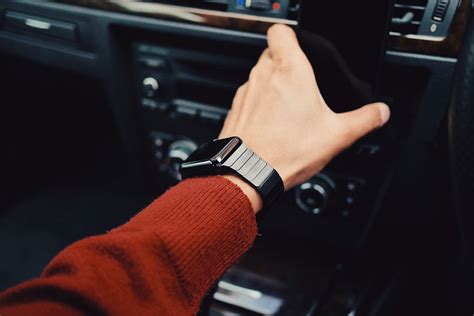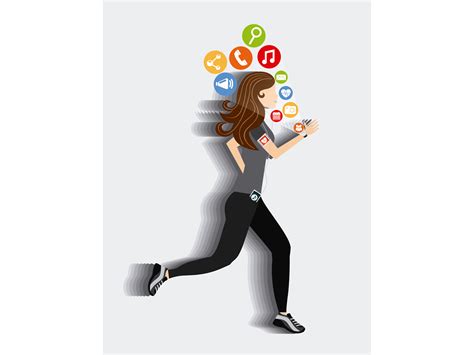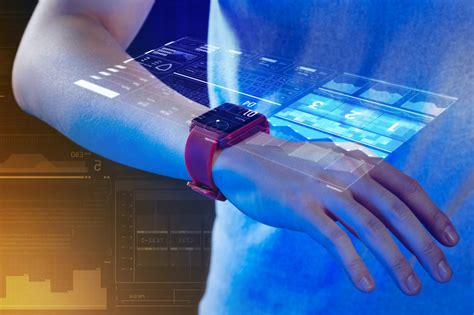Introduction to Wearable Tech
Wearable technology, often referred to as “wearables,” has revolutionized the way we interact with our devices and the world around us. These innovative gadgets seamlessly integrate into our daily lives, offering a perfect blend of functionality and fashion. From smartwatches and fitness trackers to smart glasses and clothing, wearable tech has transformed the tech industry and redefined personal accessories. In this comprehensive article, we will delve into the world of wearable devices, exploring their history, current trends, and future prospects.
The Evolution of Wearable Tech
Early Beginnings
The concept of wearable technology can be traced back to the early 1960s when mathematician Edward O. Thorp and physicist Claude Shannon developed a wearable computer to predict roulette wheels. This groundbreaking invention marked the beginning of a new era in technology. In the following decades, advancements in miniaturization and computing power paved the way for more practical and accessible wearable devices.
The Rise of Fitness Trackers
One of the most significant milestones in the history of wearable tech was the introduction of fitness trackers. These devices, designed to monitor physical activity, sleep patterns, and heart rate, gained immense popularity in the early 2010s. Brands like Fitbit, Jawbone, and Nike Fuelband revolutionized the way people approached health and wellness, making fitness tracking accessible to the masses.
Smartwatches: The Game Changer
The launch of the Apple Watch in 2015 marked a turning point in the wearable tech industry. Smartwatches, which had previously been regarded as niche devices, suddenly became mainstream. With their sleek designs, intuitive interfaces, and a wide range of features, smartwatches quickly became the most popular form of wearable technology. Today, major tech giants like Apple, Samsung, and Google continue to innovate and refine their smartwatch offerings, blurring the line between fashion and functionality.

The Functionality of Wearable Devices
Health and Fitness Monitoring
One of the primary functions of wearable devices is to monitor and track various aspects of our health and fitness. Smartwatches and fitness trackers are equipped with an array of sensors that can measure steps taken, calories burned, heart rate, sleep quality, and even stress levels. This data empowers users to make informed decisions about their lifestyle and encourages them to adopt healthier habits.
| Feature | Description |
|---|---|
| Step Tracking | Counts the number of steps taken throughout the day |
| Calorie Tracking | Estimates the number of calories burned based on activity |
| Heart Rate Monitoring | Measures heart rate during rest and exercise |
| Sleep Tracking | Analyzes sleep patterns and provides insights on sleep quality |
| Stress Monitoring | Detects stress levels based on heart rate variability |
Notifications and Communication
Another key functionality of wearable devices is their ability to keep us connected and informed. Smartwatches and smart glasses can display notifications from our smartphones, allowing us to stay up-to-date without constantly reaching for our phones. Some devices even enable users to make and receive calls, send messages, and access social media directly from their wrists.
Navigation and Information Access
Wearable tech also offers convenient access to navigation and information. Smartwatches with built-in GPS can provide turn-by-turn directions, making it easier to navigate unfamiliar areas. Additionally, many devices come with virtual assistants like Siri, Google Assistant, or Alexa, allowing users to quickly access information, set reminders, and control smart home devices using voice commands.

The Fashion Aspect of Wearable Tech
Smartwatches as Fashion Statements
Gone are the days when wearable devices were purely functional and lacked aesthetic appeal. Today’s smartwatches are designed to be fashionable accessories that complement various styles and outfits. Major fashion brands like Fossil, Michael Kors, and TAG Heuer have collaborated with tech companies to create stylish and luxurious smartwatches that blend seamlessly with their traditional timepiece collections.
Customization and Personalization
One of the key aspects of wearable tech fashion is the ability to customize and personalize devices to suit individual tastes. Smartwatches offer a wide range of customization options, from interchangeable bands and watch faces to bespoke designer collaborations. This level of personalization allows users to express their unique style while enjoying the benefits of cutting-edge technology.
Smart Clothing and Accessories
The fusion of fashion and technology extends beyond smartwatches. Smart clothing and accessories are emerging as the next frontier in wearable tech. From jackets with built-in heating elements to shoes that track fitness metrics, these innovative garments and accessories seamlessly integrate technology into our everyday attire. As the technology continues to evolve, we can expect to see more fashion-forward wearable devices that blend form and function.

The Future of Wearable Tech
Advancements in Sensor Technology
The future of wearable tech is closely tied to advancements in sensor technology. As sensors become smaller, more accurate, and more energy-efficient, we can expect wearable devices to offer even more comprehensive health monitoring capabilities. From continuous glucose monitoring for diabetics to advanced heart health tracking, the potential applications of wearable sensors are vast and promising.
Augmented Reality and Smart Glasses
Another exciting prospect for the future of wearable tech lies in the realm of augmented reality (AR) and smart glasses. While earlier attempts at smart glasses, such as Google Glass, faced challenges, the technology has continued to evolve. Future AR glasses could revolutionize the way we interact with digital information, providing seamless access to real-time data, navigation, and entertainment.
Integration with the Internet of Things (IoT)
As the Internet of Things (IoT) continues to grow, wearable devices will play an increasingly important role in the connected ecosystem. Smartwatches and other wearables will serve as central hubs for controlling and interacting with various IoT devices, from smart home appliances to connected vehicles. This integration will create a more seamless and convenient user experience, streamlining our daily lives.
Frequently Asked Questions (FAQ)
- Q: What are the benefits of using wearable tech for health and fitness?
A: Wearable tech offers several benefits for health and fitness, including: - Tracking physical activity and encouraging an active lifestyle
- Monitoring vital signs like heart rate and sleep patterns
- Providing personalized insights and recommendations for improving overall health
-
Motivating users to set and achieve fitness goals
-
Q: Are wearable devices compatible with both iOS and Android smartphones?
A: Most wearable devices, including smartwatches and fitness trackers, are compatible with both iOS and Android smartphones. However, it’s essential to check the specific device’s compatibility before making a purchase to ensure seamless integration with your existing smartphone. -
Q: How long does the battery last on a typical smartwatch?
A: The battery life of a smartwatch varies depending on the brand, model, and usage patterns. On average, most smartwatches offer a battery life of 1-2 days with regular use. However, some models with larger batteries or more energy-efficient displays can last up to a week or more on a single charge. -
Q: Can I make phone calls directly from my smartwatch?
A: Many smartwatches, particularly those with cellular connectivity, allow users to make and receive phone calls directly from their wrists. This feature is especially useful for situations where carrying a smartphone is inconvenient or impractical. However, not all smartwatches support this functionality, so it’s important to check the device’s specifications before purchasing. -
Q: Are there any privacy concerns associated with wearable tech?
A: As with any technology that collects personal data, there are potential privacy concerns associated with wearable tech. These devices often gather sensitive information, such as location data and health metrics, which could be vulnerable to security breaches or misuse. To mitigate these risks, it’s crucial to choose wearable devices from reputable brands that prioritize data security and to be mindful of the permissions granted to apps and services connected to your device.
Conclusion
Wearable technology has come a long way since its early beginnings, evolving from niche gadgets to fashionable and functional accessories that have reshaped the tech industry. With their ability to monitor health, keep us connected, and provide convenient access to information, wearable devices have become an integral part of our daily lives. As technology continues to advance, we can expect wearables to become even more sophisticated, offering new and innovative ways to enhance our well-being and streamline our digital experiences. From smartwatches and fitness trackers to smart clothing and AR glasses, the future of wearable tech is undeniably exciting, promising a world where the boundaries between technology and fashion are increasingly blurred.
Word count: 1502

No responses yet